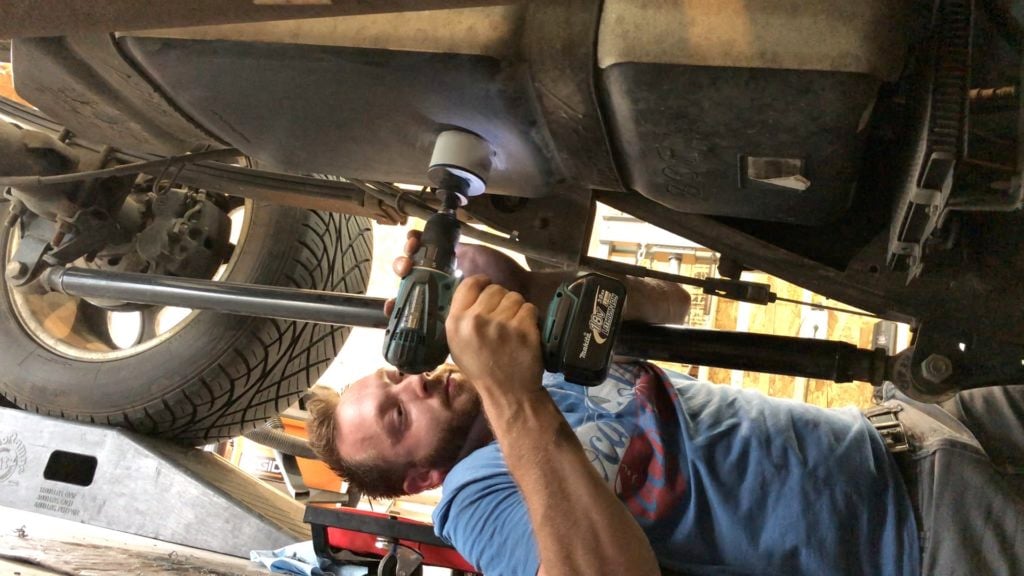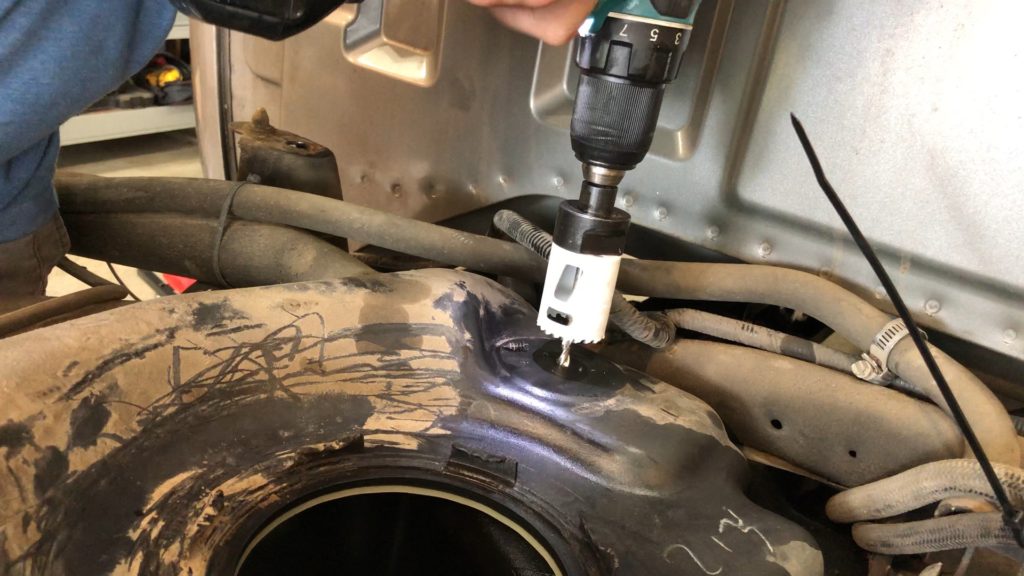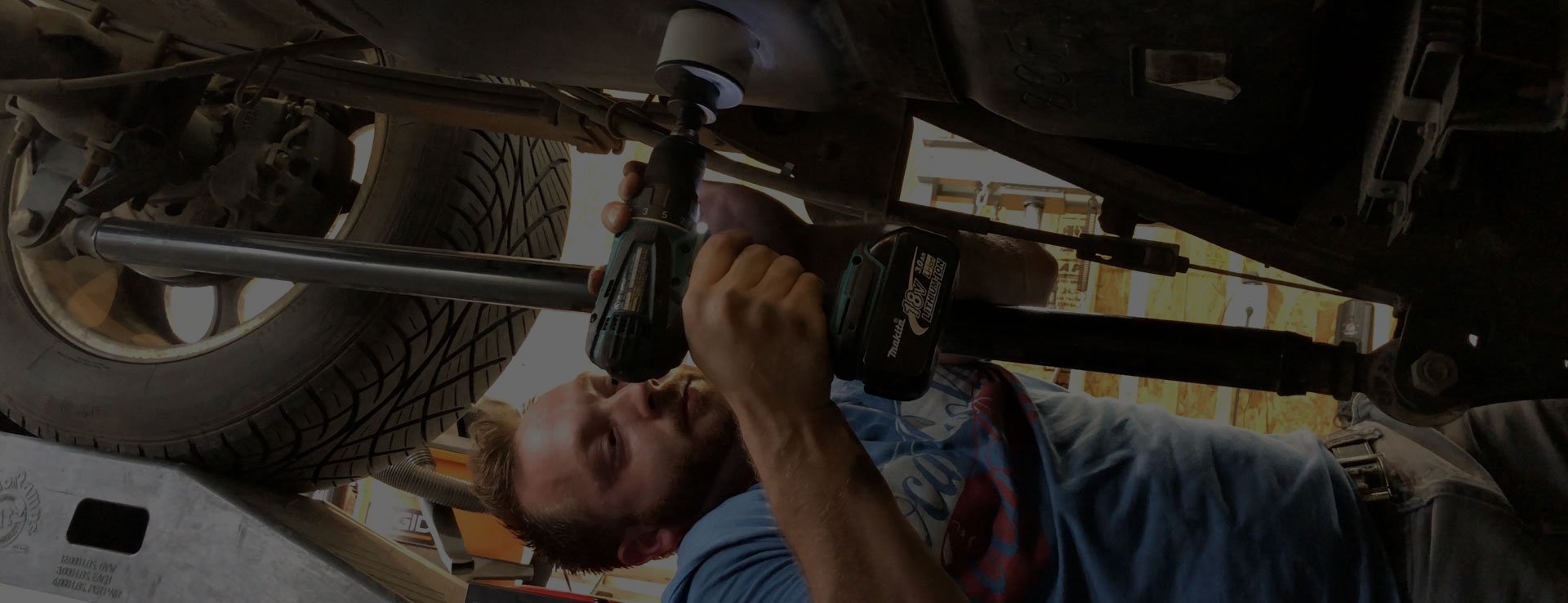Imagine you are running a marathon across the Sahara Desert and you’re generously given a 55-gallon supply of ice-cold water to get you where you need to go. It sounds like it would be more water than you would ever need, but the catch is you have to drink through a straw the size of a coffee stirrer. On top of that, when you get down to the last five gallons, you realize the straw doesn’t go all the way down to the bottom and you are left sucking air, even though there is plenty of water left. In the same way H2O keeps our bodies alive, the diesel fuel we put into our tanks is what keeps our trucks running down the road, and if you can’t move enough of it or don’t have access to all the fuel you have in the tank, you might as well get out the sleeping bag, because you’re not going anywhere.
On the surface, it seems like a crazy proposition to drink through a coffee stirrer, but we’ve all tried it at one time or another and know how difficult it can be, so it’s a great comparison to what can happen with the fuel system on your diesel truck. A very popular first modification to any rig is to add a lift pump like the FASS Titanium Signature Series 165. It will move much more fuel than stock and can keep your injection pump fed with 165 gallons of fuel per hour which supports right around 900 horsepower. In addition to moving a lot of fuel, the filtration system attached to the FASS pumps is far superior to the stock design because it removes any dirt down to 2 microns, but also separates water and removes any air which might become trapped in the fuel from normal sloshing around. The short version of the story is, the cleaner the fuel, the better the performance you can get, and the longer you can expect your injectors and high-pressure pump to last.
Depending on your final power goals and the flow rating of your lift pump, you may be able to simply hook it up to your factory suction and feed lines. Generally, if you are at a stock power level, you are good to go with no further changes. But if you’re like most truck owners, you have a thirst for horsepower which means you need to take extra precautions. The problem with an aftermarket lift pump arises whenever you need to increase the power level and total volume of fuel which will be sent to the engine. There comes a point when the stock suction line (usually about 3/8”) simply cannot flow any more fuel, yet the lift pump is demanding more and more. It’s pretty easy to tell when this is happening, as the symptoms will include increased noise from the lift pump due to cavitation, and a loss or fluctuation of fuel pressure feeding the engine. While a louder fuel pump is a bit arbitrary and can be difficult to identify over the sound of your exhaust, an easy way to tell if your lift pump is suffering from a restricted inlet is to monitor pressure feeding the injection pump with a gauge mounted inside the truck. Each engine family operates at a different specified pressure, like 8-10 PSI for a Duramax or 55-60 for a 6.7 Powerstroke, and a gauge can tell you at a glance if something is wrong. If you notice fuel pressure drops under acceleration or has wild pressure swings up and down, there’s a good chance you are starving your pump on the suction side. But once you are sure you’ve identified there is a problem, what do you do to take care of it?
Bigger Tank
In a world where bigger is better, the size of your fuel tank can make the difference between fueling up once a week or once a month, and if you drive long distances with a gooseneck in your rearview mirror, you know the benefits a larger fuel tank can give. One thing you might not know however, is S&B (yes, the same guys who make your cold air intake) are also in the fuel tank business, and they now have a 60-gallon replacement fuel tank which will extend your driving range significantly, and it easily bolts in place of your stock tank. While more fuel is great, it won’t do anything to reduce restriction for your lift pump since it still has to draw through the factory lines, but one great feature of the S&B tanks is they also come with a built in sump port which lets the lift pump draw directly from the lowest part of the tank with an oversized fuel line. Just like Folgers is good to the last drop, a sump allows every last bit of fuel to go to the lift pump, and the larger fuel line means zero restrictions. The tank easily installs inside your frame rails in the same place as your stock version, and you don’t lose any bed space like you would with a transfer tank.

Drill Some Holes
While a larger drop-in tank is great for the long hauler with a lift pump, for the daily driver or racer it may be counter intuitive to install such a large (and heavy) fuel tank. When it’s full, you’ll be carrying around a total of 420 pounds of diesel which won’t do you any favors if you want to beat the next guy to the finish line. However, you still need to solve the problem of a restricted fuel feed, but you can’t just connect a 1/2” hose to the stock port on top of the fuel tank. You have to enlarge everything all the way to the source, the first point where the fuel is picked up.
While drag racers will just swap to a bed mounted fuel cell with a large feed port located on the bottom, modern diesel trucks have a long rectangular tank mounted along the inside of the frame rail and have a capacity greater than most fuel cells, so you need another solution. Luckily the aftermarket has stepped up, and there are several Sump Conversion Kits on the market which allow you to easily add a sump to the bottom of your factory plastic fuel tank. The concept is simple: drill a hole in the bottom of your fuel tank and bolt an aluminum block to the bottom which has a ½ inch NPT connection for the suction side of the pump. This will allow you to run a fuel line which is large enough to prevent any restriction and allow the pump to operate the way it was designed, but in addition, you will be drawing fuel from the very bottom of the tank which can eliminate “1/4 tank” issues common on some types of trucks where the tank isn’t quite empty, but fuel slosh creates air pockets and prevents the pump from being able to access the fuel.

Most add-on sump designs work the same way: they bolt to the bottom of the tank, and the feed line runs underneath until it meets up with the pump. If you have a lifted truck with tons of ground clearance or you can easily route the hose away from potential hazards, the fuel line shouldn’t be in any danger, but if you have a stock height truck or frequently go off road, there is a risk of catching your fuel line on a rock or branch and losing all the fuel in your tank. If you fit into this category, there is another type of sump which has the same benefits of drawing from the lowest point on the tank, but for protection and a cleaner look, the suction line runs inside the tank instead of underneath it. The FASS Suction Tube and Sump Kit is a great companion to any lift pump (especially a FASS) and at first, it looks like any other sump, but the real magic lies with the bulkhead fitting which goes through the top of the tank. The bulkhead is where the suction port connects, but it also has a second port for the lift pump fuel return to go into, so you don’t have to cut into your truck’s filler neck for the return line.
QED: Quite Easily Done
Just like any sump installation, the very first step is to drain the fuel from the tank, and then use a hole saw to place a 2-3/4 inch hole in the bottom of the tank near the center. Because the FASS sump attaches with a series of ten 1/4” holes around the perimeter, you’ll have to drill those as well. The sump does have a 1/2” NPT port which can be used to attach a feed line directly, or you can install a pipe plug and simply use it for a tank drain if the need ever arises. The suction tube attaches to a bracket on the inside of the tank, and the pickup sits about 3/16 of an inch above the sump but is actually below the floor of the fuel tank. Regardless of how much or little fuel is in the tank, the suction line is always submerged in fuel meaning the only time you should pick up air is if you are totally out of fuel.
Back on top of the tank, you’ll have to drill a smaller hole for the bulkhead fitting to pass through and attach the suction line inside the tank. A high flowing return port is especially important with a bigger lift pump like the 165 or 250gph. Under light fuel demand conditions like highway driving, cruising around town, or especially idling, the majority of the fuel the pump picks up will be sent right back to the tank, and if you have a restriction on the return side, it could force more fuel to go into the injection pump than it can handle, which could cause damage, so it’s just as important to have a properly sized fuel return.

The Devil’s in the Details
When chasing perfection, sometimes it’s the details which make all the difference in the world. Sure, there are a lot of benefits to simply installing a lift pump onto your diesel, especially if you start with a Duramax which has no lift pump to begin with. The increased fuel volume from a FASS pump supports more horsepower than stock, and there are tremendous benefits to cleaner fuel with no water or air trapped inside. But something as simple as a fuel sump can be the icing on the cake and can make all the difference in the world when it comes to maintaining fuel pressure in all conditions and fuel levels. So, whether you have a race truck, daily driver, or cross-country tow rig, your diesel can benefit from a tank sump.


I have a Fass unit under My 2001 Dodge Cummins. Love the way I turn the key on and she fires right up, as I drive and run through the gears the motor is smoother and will wind up without pushing or having issues special on a grade or carrying loads.
I change the fuel & water filters as directed and have 267895 miles and now more problems. My milage is 19 in town and pending the roads 20 to 23.4 even with towing my loaded 3k car 22ft. trailer. Thank you
William